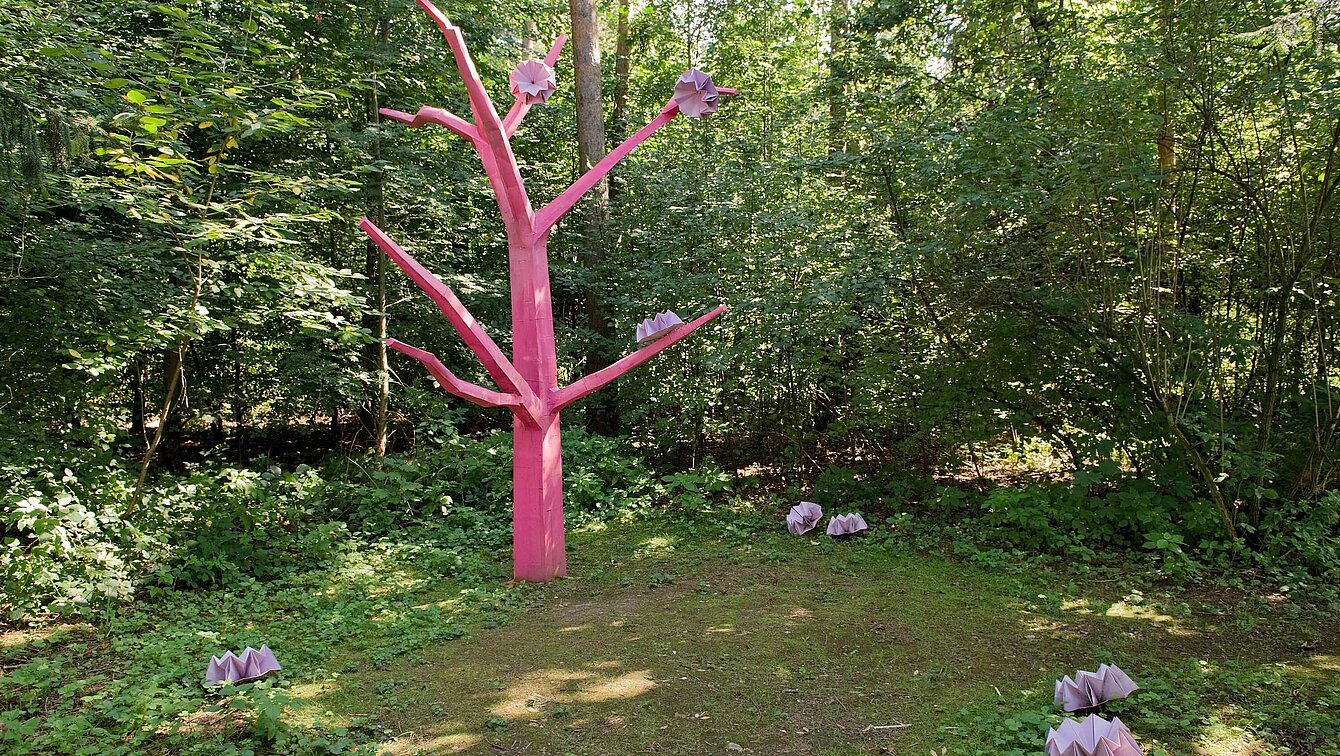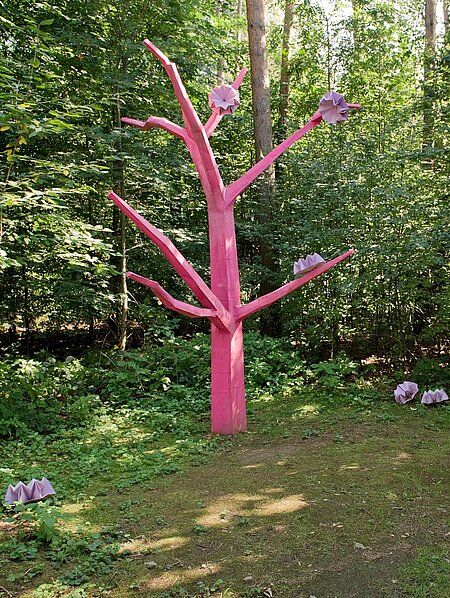As in many of his works, Rehberger poses the question here as to the social function of art. To this purpose, he changes familiar things to allow a fresh and new view of them. The tree captures our attention with its simplified, abstracted form and unusual colour, which remain the same whatever the season. The woodland as an ecological network recedes into the background, the focus now shifting onto a single component that appears both distinct and embedded. The result is a seemingly romantic, fairy-tale atmosphere that explores ecological and socially relevant issues through the tree as a symbol of life.
Asoziale Tochter [Anti-social daughter]
Tobias Rehberger, 2004


Image Credits
Author
Elisabeth Fiedler
Location on map
Position 51
Owner
Österreichischer Skulpturenpark Privatstiftung
Artist biography
Tobias Rehberger
Show all
About the sculpture
Tobias Rehberger’s work is situated in the borderland between the visual arts, sculpture, architecture, design and film, moving between different media, styles, and materials.
Rehberger’s work emphasises the relevance of social and ecological questions, such as the problem of a madly accelerated pace in an economically dynamised, de-individualised age and its socio-political consequences. In the context of Public Art, Rehberger also addresses the topic of perception, challenging viewing habits by intervening in existing structures and asking the question of what function art has within our society.
His sculpture “Anti-social daughter” is the abstracted, reduced shape of a tree in the middle of a mixed forest, surrounded by the brushwood and shrubs of a clearing. Rehberger’s point here is not the depiction or monopolisation of nature, and least of all its camouflaged subversion: Rehberger’s organic-looking, magenta-coloured sculpture, dotted with oversized blossoms, is clearly a foreign body in this setting.
The artificialness of the tree is emphasised as an imitation, a simulation; fitted into its site-specific context, it also constitutes an irritating factor. Rehberger deliberately places the sculpture in a forest setting, a cross-functional structure that nevertheless is unable to assimilate the foreign material, despite its formal rapprochement.
The unavoidable interaction with the world, the function of the individual or of the work of art that has created its own frame of reference, becomes the ironic inflation within an apparently self-regulating system. The mutual conditionality and concurrent exposure of the natural and the artificial and the decorative appearance of a vegetable form that is independent of the season connect the romantic fairy-tale atmosphere surrounding the sculpture with the archetypal reduction of a symbol of life with ecological and socio-political aspects.


















